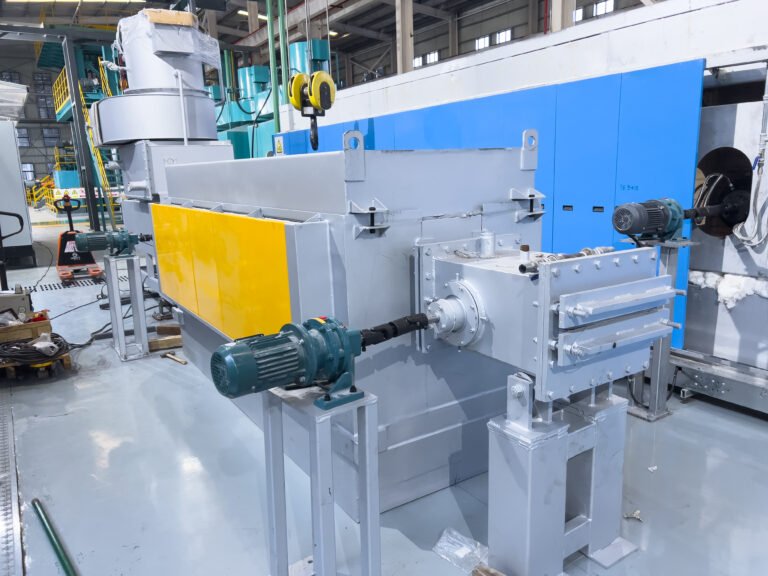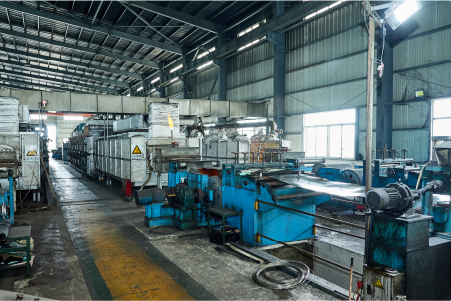
Вы оцениваете новую линию отжига меди, но оказались в ловушке между пугающей предварительной ценой и загадкой будущих эксплуатационных расходов? Эта неопределенность может привести к инвестиционному параличу, рискуя конкурентоспособностью на рынке, поскольку вы откладываете важные обновления. Главное - смотреть дальше первоначального счета.
Стоимость линии отжига меди делится на капитальные затраты (CAPEX) - первоначальные, единовременные инвестиции в печь и вспомогательное оборудование, и эксплуатационные затраты (OPEX), которые включают в себя текущие расходы, такие как энергия, рабочая сила и техническое обслуживание. Понимание этих двух составляющих необходимо для точного составления бюджета и оценки долгосрочной рентабельности.
Чтобы сделать правильный выбор, необходимо изменить взгляд на вещи. Самые успешные переработчики металла, с которыми я работал, не просто покупают печь, они инвестируют в производственную экосистему. Они понимают, что первоначальная стоимость покупки - это лишь одна часть гораздо большего финансового уравнения, которое складывается на протяжении всего срока службы оборудования. Давайте вместе разберем это уравнение.
Помню, как несколько лет назад я посетил предприятие по производству медной ленты в Юго-Восточной Азии. Они выбрали, казалось бы, недорогую печь, и хотя их первоначальные капитальные затраты были завидными, в реальности они постоянно боролись с высокими счетами за электроэнергию и непостоянным качеством отжига, что приводило к высокому уровню брака. Этот опыт укрепил мою веру в то, что самые важные разговоры, которые мы ведем в AKS, касаются не цены, а общей стоимости владения (TCO). Более разумные капитальные затраты, сфокусированные на эффективности и надежности, являются самым мощным рычагом для контроля долгосрочных операционных затрат и обеспечения прибыльности на долгие годы.
Что такое CAPEX и OPEX в контексте линий отжига меди?
Вы не можете определиться с тем, какие расходы несет в себе новая производственная линия? Путаница в капитальном и операционном бюджетах может привести к неточным финансовым прогнозам и трудностям с привлечением финансирования, что ставит под угрозу весь проект. Четкое понимание - это первый шаг на пути к разумным инвестициям.
При отжиге меди CAPEX относится к основным инвестициям: сама печь, вспомогательное оборудование, такое как платилки и разматыватели, а также затраты на установку. OPEX включает в себя все текущие расходы, необходимые для работы линии, в том числе энергию, защитные газы, рабочую силу, запасные части и текущее обслуживание.
Разделение этих двух категорий затрат - не просто бухгалтерская формальность, а стратегическая необходимость. CAPEX определяют ваши производственные возможности и технологическую основу, в то время как OPEX диктуют ваши текущие затраты на тонну продукции и конкурентоспособность на рынке. Я видел, как многие компании получали финансирование на покупку крупного оборудования, но недооценивали ежедневные текущие расходы, что приводило к неожиданному сокращению прибыли. Если с самого начала проанализировать оба показателя, можно составить комплексное экономическое обоснование, которое выдержит тщательную проверку со стороны заинтересованных сторон и финансовых учреждений и обеспечит устойчивость вашего проекта на протяжении длительного времени после завершения первоначальной установки.

По-настоящему надежный финансовый план для линии отжига меди требует детальной разбивки каждого компонента затрат. Первоначальные инвестиции ощутимы и часто являются предметом переговоров, но повторяющиеся эксплуатационные расходы - это то, что в конечном итоге определяет рентабельность линии на протяжении всей жизни. Давайте разберем эти элементы, чтобы выяснить, как они взаимосвязаны и влияют на конечный результат в долгосрочной перспективе. Такой более глубокий анализ позволяет избежать распространенной ловушки, когда "копейка мудра, а фунт глуп" - сценария, при котором низкие первоначальные затраты приводят к непосильным эксплуатационным расходам в дальнейшем.
Деконструкция капитальных затрат (CAPEX): Основа вашей линии
Капитальные затраты - это основа вашего производственного потенциала. Самым значительным элементом здесь является, конечно, сама печь для отжига. Однако вся линия представляет собой интегрированную систему. Сюда входит стоимость механического оборудования, такого как разматыватели и сматыватели, рулевые устройства и сварочные аппараты для сварки полос, которые обеспечивают непрерывную работу. Вы также должны учитывать критически важные системы, такие как секция очистки полосы, которая жизненно важна для достижения безупречной, яркой отделки меди.
Помимо оборудования, CAPEX включает в себя значительные "мягкие расходы". Установка и ввод в эксплуатацию - это значительные расходы, требующие привлечения специализированных инженерных групп для обеспечения правильной работы. Подготовка площадки, включая фундаментные работы, подведение коммуникаций (газ, вода, электричество) и инфраструктура безопасности, также должны быть учтены в первоначальном бюджете. Я всегда советую клиентам закладывать в бюджет не менее 15-20% сверх стоимости оборудования на эти расходы, связанные с интеграцией и площадкой, поскольку они часто недооцениваются.
ли, уровень технологии и выбор материала создают значительные различия в капитальных затратах. Печь с муфелем из высоконикелевого сплава (например, Inconel 601) имеет более высокую первоначальную стоимость, чем печь со стандартным муфелем из нержавеющей стали (например, 310S), но она обеспечивает превосходную высокотемпературную прочность и гораздо более длительный срок службы, что напрямую влияет на будущие эксплуатационные расходы. Аналогичным образом, инвестирование в передовой пакет автоматизации с системами ПЛК и SCADA увеличивает капитальные затраты, но приносит дивиденды за счет сокращения трудозатрат и повышения стабильности процесса.
Распаковка операционных расходов (OPEX): Двигатель вашего производства
Если CAPEX - это тело вашей линии отжига, то OPEX - это ее метаболизм - энергия, которую она потребляет, чтобы оставаться живой и продуктивной. Самым крупным компонентом OPEX обычно является энергия. Сюда входит природный газ или электричество, необходимые для нагрева печи до температуры, часто превышающей 1000°C. Для линии среднего размера, обрабатывающей несколько тонн в час, это может составлять десятки тысяч долларов в месяц, что делает эффективность печи основным фактором рентабельности.
Вторым основным компонентом операционных расходов является потребление газов защитной атмосферы. Для достижения желаемой яркости и отсутствия окислов на меди процесс отжига должен происходить в контролируемой атмосфере, обычно представляющей собой смесь водорода (H₂) и азота (N₂). Затраты на приобретение и хранение этих высокочистых газов являются значительными и постоянными расходами. Печь с превосходной герметизацией и точным контролем атмосферы будет потреблять гораздо меньше газа, что напрямую снижает стоимость тонны.
Расходы на оплату труда, техническое обслуживание и расходные материалы составляют последний компонент OPEX. Сюда входит заработная плата операторов и техников, стоимость планового технического обслуживания и бюджет на запасные части, такие как нагревательные элементы, термопары, конвейерные ленты или ролики. Незапланированные простои - самая опасная скрытая статья расходов; плохо изготовленное оборудование, которое неожиданно выходит из строя, не только влечет за собой расходы на ремонт, но и приводит к потере производства и потенциальному срыву сроков выполнения заказов, что делает надежность важнейшим, хотя и косвенным, фактором в управлении OPEX.
Скрытая связь: Как выбор CAPEX диктует реальность OPEX
Самое важное понимание заключается в том, что CAPEX и OPEX не являются независимыми переменными; они тесно взаимосвязаны. Решение, принятое для снижения CAPEX, почти всегда имеет последствия для OPEX. Например, выбор печи с более тонкой или низкосортной изоляцией снизит первоначальную стоимость покупки, но она будет пропускать тепло, что приведет к постоянному увеличению потребления энергии в течение всего срока службы оборудования.
Этот компромисс занимает центральное место в философии, которую мы применяем в AKS. Мы можем порекомендовать клиенту инвестировать больше средств (более высокий CAPEX) в систему рекуперации отработанного тепла. Эта система улавливает горячие выхлопные газы для подогрева поступающего воздуха для горения, снижая расход топлива на целых 15-20%. Первоначальные затраты выше, но экономия на эксплуатационных расходах обеспечивает период окупаемости всего в пару лет, после чего экономия сразу идет в прибыль.
Рассмотрим это упрощенное сравнение для линии, отжигающей 5 тонн медной ленты в час. Стандартная печь может иметь более низкую первоначальную стоимость, но ее более высокое потребление энергии и газа со временем приводит к значительному увеличению эксплуатационных расходов. Модель "High-Efficiency", характерная для конструкции AKS, требует больших первоначальных инвестиций, но обеспечивает значительную долгосрочную экономию. Это показывает, что решение о покупке должно рассматриваться через призму общей стоимости владения (TCO), а не только через первоначальную цену.
| Компонент затрат | Стандартная печь (более низкие капитальные затраты) | Высокоэффективная печь (оптимизированная совокупная стоимость владения) |
|---|---|---|
| Первоначальные капитальные затраты | ~$800,000 | ~$1,000,000 |
| Потребление энергии | ~350 кВтч/тонна | ~280 кВтч/тонна (с рекуперацией отработанного тепла) |
| Защитный газ | ~50 м³/тонна | ~35 м³/тонна (с улучшенной герметизацией) |
| Годовые затраты на электроэнергию | ~$588,000 | ~$470,400 |
| Годовые расходы на газ | ~$150,000 | ~$105,000 |
| Годовая экономия операционных расходов | - | $162,600 |
| Окупаемость дополнительных капвложений | - | ~1,23 года |
Примечание: Затраты носят иллюстративный характер и основаны на предполагаемых ценах на электроэнергию ($0,12/кВтч) и газ ($0,30/м³).
Капитальные затраты включают установку печиПравда
Капитальные затраты включают в себя как расходы на приобретение оборудования, так и расходы на монтаж/пусконаладочные работы, как указано в разделе "Декомпозиция капитальных затрат".
OPEX - это только затраты на электроэнергиюЛожь
OPEX включает в себя множество повторяющихся расходов, таких как защитные газы, рабочая сила и техническое обслуживание, а не только энергию, как объясняется в разделе "Распаковка операционных расходов".
Как соотносятся CAPEX и OPEX для линий отжига меди в 2025 году?
Планирование бюджета на 2025 год похоже на навигацию в шторме растущих затрат и волатильности рынка. Опасения, что резкий рост цен на энергоносители и нарушение цепочки поставок сделают ваш проект нерентабельным, вполне реальны. Чтобы инвестировать с уверенностью, вам нужен четкий перспективный анализ.
В 2025 году баланс изменится. В то время как CAPEX для линий отжига меди остается высоким первоначальным препятствием из-за стоимости материалов и технологий, нестабильные рынки энергоносителей поднимают OPEX на позицию равной, если не большей, стратегической важности для долгосрочной финансовой жизнеспособности.
В течение десятилетий многие покупатели уделяли основное внимание минимизации первоначальных инвестиций. Обычная мудрость заключалась в том, чтобы установить линию с минимально возможными капитальными затратами и управлять эксплуатационными расходами по мере их поступления. Однако мои разговоры с клиентами из разных стран экспортные рынки1от Индии до Европы, свидетельствуют о кардинальных изменениях. Неумолимый рост мировых цен на энергоносители и растущий спрос на идеально ровную и высококачественную медную ленту изменили расчеты. В 2025 году неспособность расставить приоритеты при принятии решений о капитальных затратах является прямой угрозой вашей будущей конкурентоспособности. Это больше не игра на краткосрочную экономию, а игра на долгосрочное операционное совершенство и устойчивость.
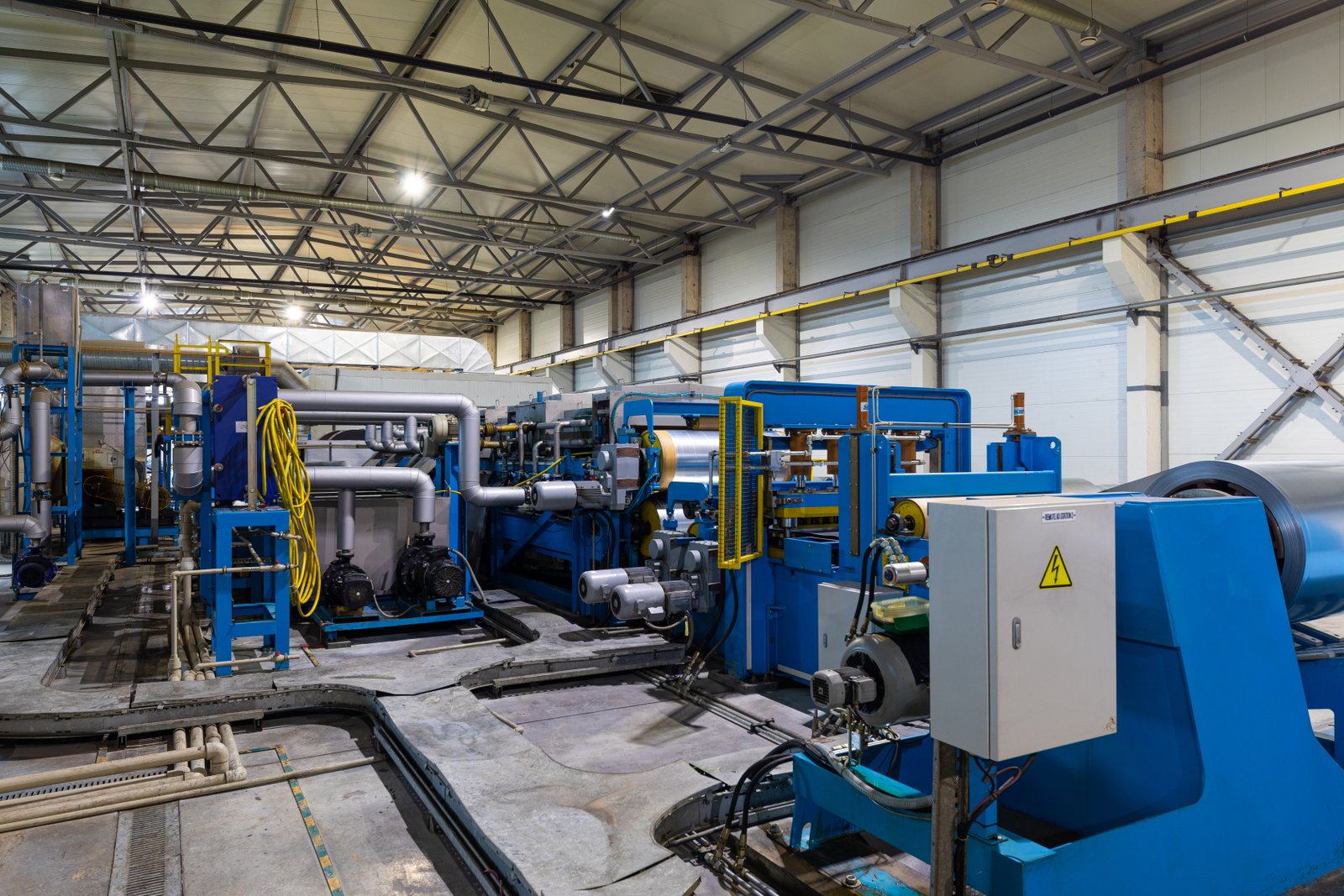
Финансовый ландшафт промышленного производства становится все более сложным. Времена простого бюджета капитальных вложений прошли. Сегодня по-настоящему стратегические инвестиции должны предвидеть траекторию эксплуатационных расходов в течение следующего десятилетия. Взаимосвязь между первоначальными затратами и последующими эксплуатационными расходами динамична как никогда. Такие факторы, как мировая энергетическая политика, политика налогообложения выбросов углекислого газа и стремление к автоматизации, меняют Общая стоимость владения2 модель. Давайте изучим эту современную финансовую динамику, чтобы понять, как соотношение между CAPEX и OPEX меняется в режиме реального времени и что это означает для вашей инвестиционной стратегии в 2025 году и далее.
Первоначальные расходы: Тенденции капитальных вложений в условиях высоких затрат
В 2025 году капитальные затраты на строительство новой линии отжига меди будут определяться несколькими устойчивыми глобальными тенденциями. Цены на высококачественную сталь и специальные сплавы, необходимые для строительства печей, остаются повышенными из-за сохраняющихся ограничений в цепочке поставок и высоких затрат на энергоносители для металлургов. За последние три года стоимость сплавов на основе никеля, необходимых для изготовления долговечных муфелей и радиантных труб, выросла более чем на 30%. Это напрямую увеличивает стоимость основной печи.
Кроме того, повысилась технологическая планка того, что считается "стандартной" печью. Теперь заказчики по праву требуют более высокой степени автоматизации и возможностей регистрации данных, чтобы соответствовать строгим требованиям к качеству конечных пользователей в таких отраслях, как производство электроники и электромобилей. Интеграция сложных систем управления ПЛК, SCADA для мониторинга всей установки и множества датчиков для контроля температуры, атмосферы и натяжения становится обязательным условием. Хотя эти системы повышают качество и сокращают трудозатраты (это выгодно с точки зрения OPEX), они добавляют значительный слой к первоначальным CAPEX.
В результате высококачественная линия непрерывного отжига, которая до пандемии могла стоить $1,5 млн, теперь может приблизиться к $1,8-$2,0 млн, в зависимости от производительности и характеристик. Это увеличение делает решение о капитальных затратах еще более критичным; при более высокой начальной цене обеспечение эффективности и производительности инвестиций с первого дня имеет первостепенное значение для достижения разумного возврата инвестиций (ROI).
Длинная игра: Волатильность ОПЭКС как новая норма
В 2025 году наибольшая неопределенность будет наблюдаться со стороны операционных расходов. Мировые энергетические рынки стали исключительно нестабильными. В Европе наблюдались беспрецедентные скачки цен на природный газ, и хотя они, возможно, стабилизировались после своего пика, они остаются на исторически высоком базовом уровне. Это напрямую влияет на производителей, использующих печи, работающие на газе. Аналогичным образом, цены на электроэнергию во многих регионах имеют тенденцию к росту, что обусловлено затратами на модернизацию электросетей и колебаниями объемов производства возобновляемых источников.
Такой рост цен на энергоносители означает, что эффективность печи больше не является "приятной мелочью", это основное конкурентное требование. Старая или плохо спроектированная печь, потребляющая на 20-30% больше энергии, чем современная эффективная печь, может превратить прибыльную деятельность в убыточную практически за одну ночь во время скачка цен. Этот риск должен быть смоделирован в любом финансовом прогнозе.
Помимо энергии, стоимость рабочей силы продолжает расти во всем мире, что подталкивает производителей к большей автоматизации. Стоимость промышленных газов, таких как водород и азот, также привязана к ценам на энергоносители, поскольку их производство является энергоемким. Таким образом, всеобъемлющий прогноз OPEX на 2025 год должен предполагать постоянный рост цен на все основные ресурсы, что делает технологии, снижающие OPEX, стратегическим императивом.
Сравнительная финансовая модель: Общая стоимость владения (TCO) за 10 лет
Наиболее эффективным способом сравнения CAPEX и OPEX является анализ общей стоимости владения (TCO). Эта модель прогнозирует все расходы в течение разумного срока службы оборудования, обычно 10-15 лет. Она показывает, как первоначальное решение о капитальных затратах окупается с течением времени. Давайте смоделируем два сценария для компании, планирующей инвестиции в 2025 году.
Сценарий A: "Фокус на низких капвложениях". Эта компания выбирает печь, которая изначально дешевле, что позволяет сэкономить $300 000 на капитальных затратах. Однако эта печь не обладает передовыми энергосберегающими функциями и имеет менее надежное уплотнение.
Сценарий B: "Оптимизированная ТСО". Эта компания инвестирует в печь AKS с более высокими первоначальными капитальными затратами, но оснащенную системой рекуперации отработанного тепла, прецизионной системой сжигания и превосходным газовым уплотнением.
В таблице ниже показаны финансовые последствия за 10 лет при условии скромной годовой инфляции в 5% на ОПЭ.
| Метрика (горизонт 10 лет) | Сценарий A: Низкие капвложения | Сценарий B: Оптимизация ТСО |
|---|---|---|
| Первоначальные капитальные затраты | $1,200,000 | $1,500,000 |
| Годовой расход на эксплуатацию (год 1) | $600,000 | $480,000 |
| Совокупный OPEX (10 лет) | ~$7,546,000 | ~$6,037,000 |
| Общая стоимость владения (10 лет) | $8,746,000 | $7,537,000 |
| Чистая экономия при использовании модели TCO | - | $1,209,000 |
Этот анализ TCO ясно показывает, что первоначальные $300 000, сэкономленные на CAPEX, приводят к дополнительным $1,5 миллионам OPEX в течение десятилетия. Более дорогая печь на самом деле более чем на $1,2 миллиона дешевле, если рассматривать ее через стратегическую, долгосрочную призму. В условиях конкуренции 2025 года эта разница в совокупной стоимости владения является разницей между лидерством на рынке и борьбой за выживание.
OPEX теперь так же важен, как и CAPEXПравда
Из-за нестабильных цен на энергоносители и растущих операционных затрат OPEX стали одинаково или даже более стратегически важными, чем CAPEX, для долгосрочной финансовой жизнеспособности.
Снижение CAPEX всегда означает снижение TCOЛожь
Как показано в анализе TCO, более низкие первоначальные капитальные затраты могут со временем привести к значительному росту общих расходов из-за увеличения операционных расходов на менее эффективное оборудование.
Какие факторы влияют на капитальные затраты на создание линии отжига меди?
Вы готовы запросить коммерческое предложение, но количество переменных кажется вам непомерно большим. Неправильное указание параметров может привести к тому, что предложение окажется либо слишком дорогим, либо, что еще хуже, не соответствующим вашим потребностям, что приведет к задержке проекта и пересмотру бюджета. Давайте проясним ключевые факторы, определяющие окончательную цену.
Основными факторами, определяющими CAPEX линии отжига меди, являются ее физические размеры и производственная мощность (тонн/час), метод нагрева (газовый или электрический), марка материалов, используемых в конструкции (например, высоконикелевые сплавы), а также сложность систем автоматизации и управления.
Думайте о выборе линии печи, как о выборе нового автомобиля. Базовая модель имеет определенную цену, но объем двигателя, тип трансмиссии и выбранный вами технологический пакет в конечном итоге определяют конечную стоимость. Я провожу своих клиентов через подробный процесс, чтобы точно определить их потребности. Речь идет не только о том, что вам нужно сегодня, но и о том, каким вы хотите видеть свой бизнес через пять лет. Правильный выбор по этим основным факторам гарантирует, что вы инвестируете в решение, которое будет адаптировано, экономически эффективно и перспективно.
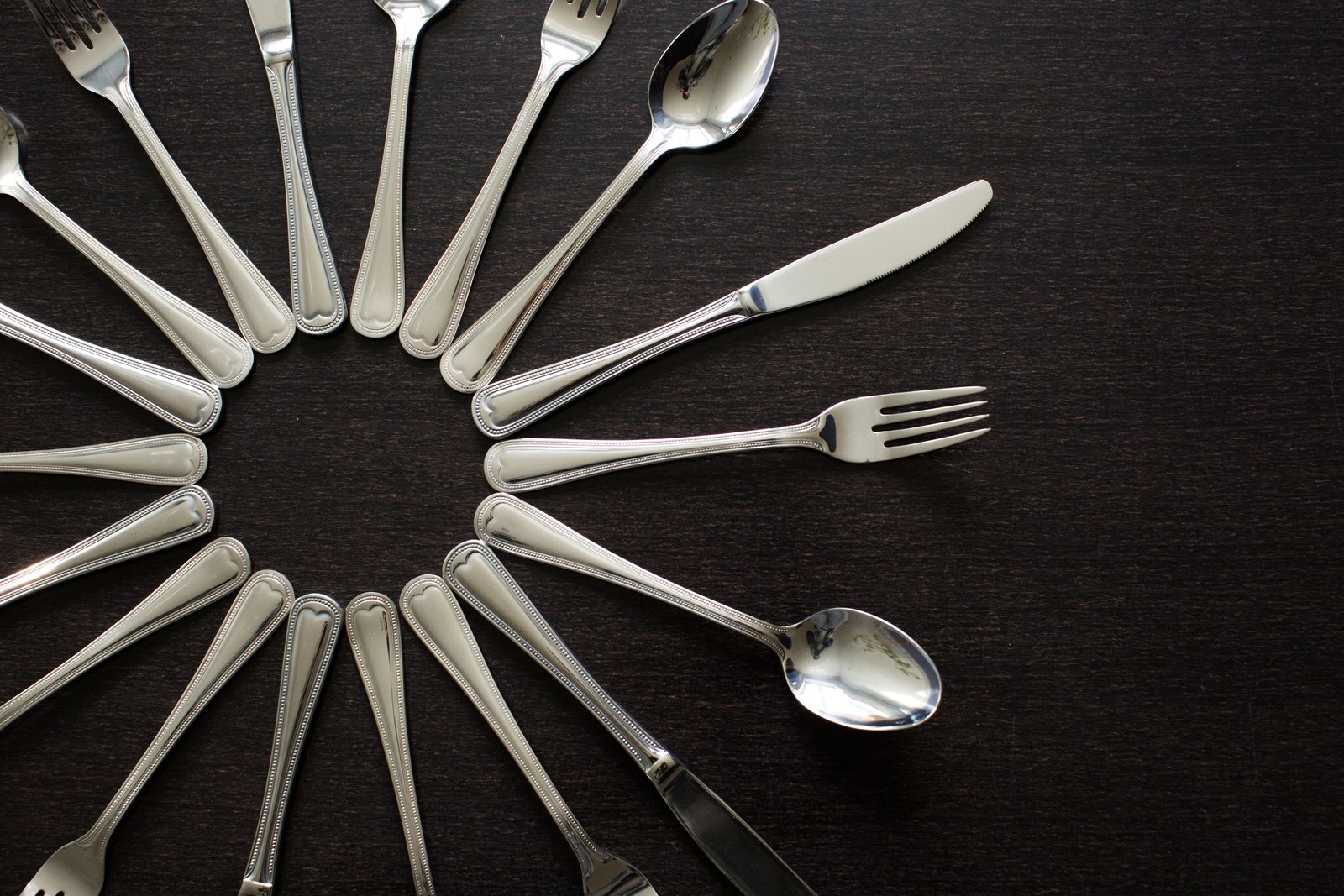
Каждая линия отжига меди, которую мы строим в AKS, по сути, является индивидуальным решением. Хотя они основаны на проверенных конструкциях, окончательная конфигурация всегда соответствует конкретным производственным условиям клиента. Факторы, влияющие на конечные капитальные затраты, многочисленны и взаимосвязаны. Они варьируются от фундаментальных законов термодинамики, диктующих размер печи, до специфических металлургических свойств, необходимых для конечного продукта, которые, в свою очередь, диктуют сложность системы управления. Понимание этих факторов крайне важно для того, чтобы вы были информированным покупателем, способным участвовать в содержательных технических дискуссиях и делать выбор, соответствующий вашему бюджету и производственным целям. Давайте рассмотрим три основные области, которые оказывают наиболее значительное влияние на первоначальные инвестиции.
Технические характеристики стержневой печи: Размеры, материал и конструкция
Самым главным фактором, определяющим стоимость, является размер и производительность печи. Это диктуется вашими производственными требованиями: максимальной шириной и толщиной медной полосы, которую вам нужно обработать, и желаемой производительностью в тоннах в час. Линия, рассчитанная на производство 5 тонн в час широких полос, будет значительно больше, для нее потребуется больше стали, больше изоляции и более мощные системы нагрева и охлаждения, чем для линии, рассчитанной на производство 1 тонны в час узкой фольги. Физика не подлежит обсуждению: большая масса требует больше энергии и более длинной нагревательной камеры для достижения температуры отжига, что напрямую увеличивает физическую площадь печи и ее стоимость.
Метод нагрева.газовые, газовые или электрические нагревательные элементы прямого нагрева3- еще один важный момент для принятия решения. Газовые системы часто имеют более низкую эксплуатационную стоимость в регионах с доступным природным газом, но лучистые трубы и системы сгорания могут усложнить и удорожить капитальные затраты. Электрические печи обеспечивают более точный контроль температуры и имеют более простую конструкцию, но могут иметь более высокие эксплуатационные расходы в зависимости от местных тарифов на электроэнергию.
Выбор материала - третий, решающий фактор. Сердцем печи для отжига ярких материалов является муфель - закрытая камера, содержащая защитную атмосферу. Этот муфель должен выдерживать экстремальные температуры и термоциклы. Использование стандартной нержавеющей стали, такой как SUH310, является обычным выбором, но для более высоких температур или применений, требующих более длительного срока службы и меньшего количества замен, мы рекомендуем высоконикелевые сплавы, такие как Inconel 601. Хотя этот премиальный материал значительно увеличивает первоначальные капитальные затраты, он продлевает срок службы муфеля с 2-3 лет до 7-10 лет, значительно сокращая будущие расходы на обслуживание и время простоя.
Автоматизация и системы управления: От ручного управления до Индустрии 4.0
Уровень автоматизации является основной переменной в конечных капитальных затратах. В базовой линии могут использоваться простые ПИД-регуляторы для температурных зон и ручная регулировка расхода газа и натяжения полосы. Такой подход позволяет минимизировать первоначальные затраты, однако для поддержания стабильности работы в значительной степени зависит от квалифицированных операторов, что часто приводит к колебаниям качества и повышенному потреблению энергии и газа.
Напротив, современная линия с поддержкой Industry 4.0, на которой специализируется компания AKS, использует централизованный ПЛК (программируемый логический контроллер) и систему SCADA (диспетчерское управление и сбор данных). Это обеспечивает центральный интерфейс для оператора, позволяющий отслеживать и контролировать каждый параметр - температурные профили, состав атмосферы, скорость ленты и натяжение в режиме реального времени. Это позволяет использовать такие функции, как прецизионный контроль соотношения газа и воздуха при сжигании, который оптимизирует эффективность использования топлива секунда за секундой.
Эта передовая система управления значительно увеличивает капитальные затраты. Она требует сложных датчиков, исполнительных механизмов и сложного программного обеспечения для их интеграции. Однако окупаемость вложений в эту систему очень велика. Она снижает необходимость постоянного вмешательства оператора, обеспечивает повторяемость высококачественной продукции партия за партией, минимизирует количество брака и предоставляет бесценные данные для оптимизации процесса и контроля качества. Для клиентов, ориентированных на экспорт и работающих на требовательных рынках, такой уровень контроля уже не роскошь, а необходимость.
Вспомогательное оборудование и интеграция: Создание комплексной линии
Частая ошибка, которую я вижу, когда компании выделяют бюджет на новую линию, - это концентрация исключительно на печи. Печь - это не отдельная машина; она является центральным элементом интегрированной производственной линии. CAPEX должен учитывать все необходимое вспомогательное оборудование для ее функционирования. Оно начинается с входной секции, которая включает в себя разматыватель (разматыватель) и, зачастую, машину для сварки полосы, чтобы соединить рулоны для непрерывной работы, избегая необходимости повторной намотки печи.
Далее следует секция предварительной очистки, которая часто необходима при производстве меди для удаления остатков прокатного масла и обеспечения идеально чистой поверхности для отжига. После секции охлаждения печи, на выходе из нее, требуется разматыватель (или натяжной барабан) для сматывания готовой полосы в плотный, однородный рулон. Эти крупные машины составляют большую часть общих капитальных затрат.
Интеграция всех этих компонентов сама по себе является значительным фактором стоимости. В компании AKS основной частью наших услуг является проектирование всей линии. Для недавнего проекта с клиентом из Индии, производящим тонколистовую медную ленту для электронной промышленности, мы разработали индивидуальное решение. Задача заключалась в поддержании чрезвычайно точного и низкого натяжения на всей линии, чтобы избежать растяжения или повреждения деликатного материала. Наша команда инженеров разработала сложную систему управления приводами, которая синхронизировала двигатели разматывателя, печных роликов и повторного разматывателя - интеграция, которая имела решающее значение для успеха проекта и стала ключевой частью общих капиталовложений.
| Категория характеристики | Базовая конфигурация (низкие капитальные затраты) | Расширенная конфигурация (более высокий CAPEX) | Влияние на стоимость |
|---|---|---|---|
| Муфта для печи | Нержавеющая сталь (например, 310S) | Высоконикелевый сплав (например, инконель 601) | Высокий |
| Система управления | Независимые ПИД-регуляторы | Интегрированный ПЛК с системой SCADA | Высокий |
| Система отопления | Стандартные газовые горелки | Горелки с прецизионным контролем соотношения газ/воздух | Средний |
| Обработка полос | Ручное переключение катушки | Полуавтоматические ножницы и сварочный аппарат | Средний |
| Регистрация данных | Ручные самописцы | Архивация цифровых данных и отчетность | Средний |
| Техническая поддержка | Базовая установка | Полная интеграция и оптимизация процессов | Низкий |
Размер печи влияет на капитальные затратыПравда
Более крупные печи требуют больше материалов и энергии, что напрямую увеличивает капитальные затраты.
Электрическое отопление всегда обходится дешевлеЛожь
Экономическая эффективность электрического отопления зависит от местных тарифов на электроэнергию и цен на газ.
Как эксплуатационные расходы влияют на долгосрочную стоимость отжига меди?
Вы успешно установили новую линию отжига, и первоначальные инвестиции уже позади. Но теперь начинают приходить ежемесячные счета за коммунальные услуги и поставки, и они выше, чем вы предполагали. Эти ползучие эксплуатационные расходы могут незаметно подорвать вашу прибыль, превратив, казалось бы, удачную инвестицию в финансовую катастрофу.
Эксплуатационные расходы (OPEX) являются доминирующим фактором в долгосрочной стоимости отжига меди, часто составляя более 70% от общей стоимости владения. Потребление энергии и защитного газа - самые большие переменные, неэффективность которых может напрямую перечеркнуть рентабельность оборудования в течение всего срока его службы.
Именно в этот момент проявляется мудрость вашего первоначального решения о капитальных затратах. Печь - это не одноразовая покупка;4 это подписка на определенный уровень потребления энергии и ресурсов на ближайшие 15-20 лет. В компании AKS мы проектируем наши печи с учетом этой реальности. Функции, которые могут показаться дополнительными расходами в процессе продажи, такие как наша двухслойная камера с рекуперацией отработанного тепла, специально разработаны для сокращения этих долгосрочных, повторяющихся расходов. Влияние операционных расходов - это не просто бухгалтерская деталь; это основной фактор, определяющий долгосрочную рентабельность вашей линии и вашу способность конкурировать по стоимости тонны.
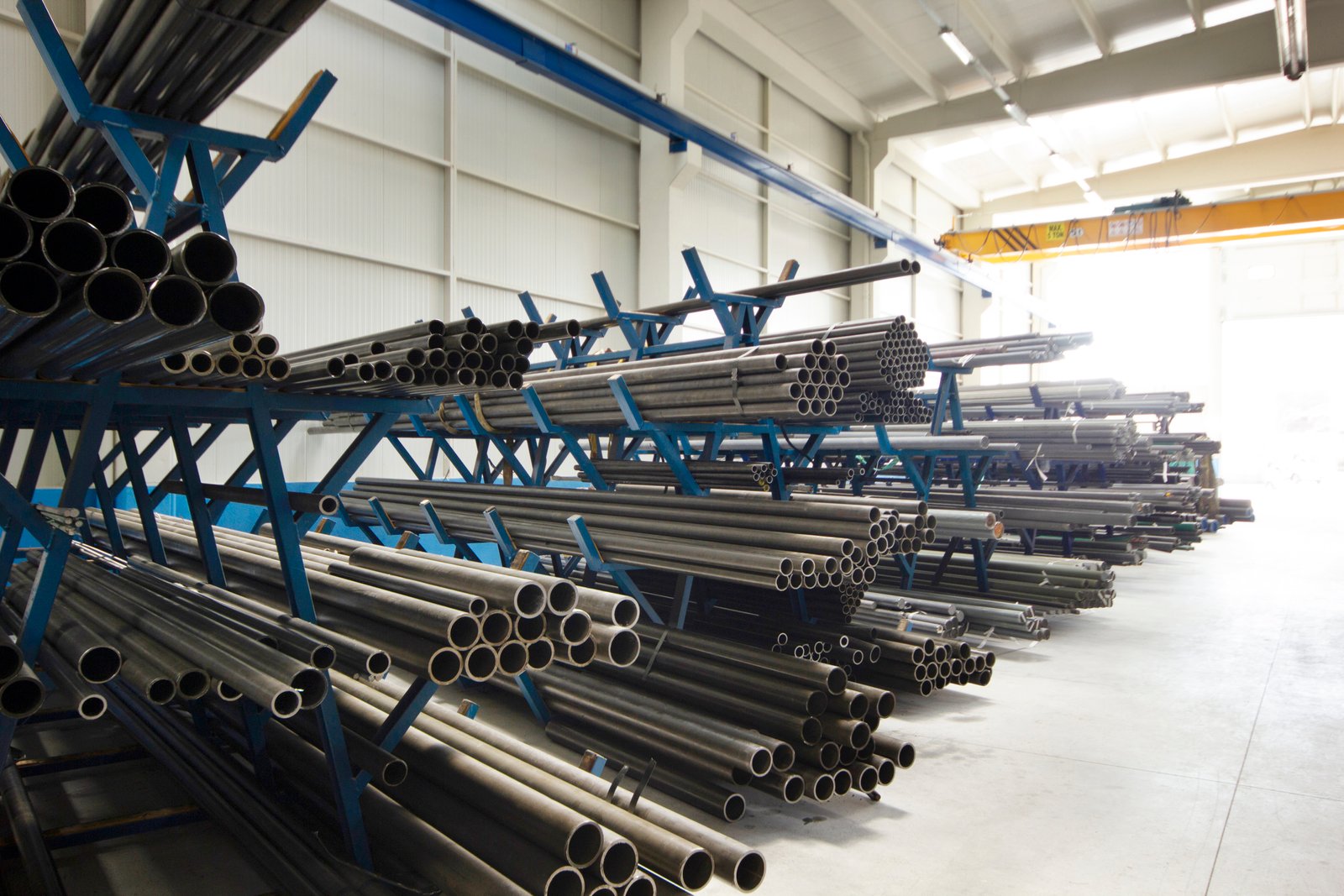
Покупная цена промышленной печи - это лишь верхушка айсберга. Истинная, долгосрочная стоимость этого актива скрыта под поверхностью, в ежедневных, ежемесячных расходах на его эксплуатацию. Эти эксплуатационные расходы неумолимы. В отличие от единовременного капитального взноса, они происходят каждый день, когда вы работаете на производстве. Небольшая неэффективность, умноженная на тысячи рабочих часов в год, быстро превращается в существенное финансовое бремя. Поэтому критический анализ ключевых факторов, влияющих на OPEX, необходим любому серьезному покупателю. Именно в управлении этими переменными лидеры рынка выделяют себя из общей массы, превращая операционную эффективность в мощное конкурентное оружие. Давайте разберем три наиболее значимых компонента OPEX.
Счет за электроэнергию: самая большая переменная OPEX
Несомненно, потребление энергии - это самый большой и самый непостоянный компонент вашего операционного бюджета. Независимо от того, используете ли вы природный газ или электричество, процесс нагрева сотен или тысяч килограммов меди до температуры отжига каждый час требует огромных энергозатрат. Поэтому эффективность вашей печи в преобразовании этой энергии в полезное тепло является единственным наиболее важным фактором для контроля расходов на эксплуатацию.
Именно здесь конструкция печи играет решающую роль. Качество и толщина изоляционного материала имеют первостепенное значение. Мы используем многослойную изоляцию из керамического волокна высокой плотности, чтобы свести к минимуму потери тепла через стенки печи. Но по-настоящему меняющим фактором является способ обработки отработанного тепла. В стандартной печи горячие отработанные газы, часто с температурой 700-800°C, просто выбрасываются в атмосферу - колоссальная потеря энергии. Наши печи AKS оснащены встроенным теплообменником. Эта система забирает энергию горячих выхлопных газов для предварительного нагрева свежего воздуха для горения, поступающего в горелки. Этот процесс может снизить общее потребление топлива на 15-20%, что является прямым и постоянным снижением ваших самых больших эксплуатационных расходов.
Давайте посмотрим на это в перспективе. Для линии, потребляющей $40 000 энергии в месяц, снижение на 15% означает экономию $6 000 в месяц, или $72 000 в год. За 10 лет эта единственная конструктивная особенность может сэкономить вам более трех четвертей миллиона долларов, зачастую окупая все первоначальные инвестиции в саму печь.
Защитная атмосфера: Цена яркой отделки
Достижение зеркально-яркой поверхности меди без окислов - вот в чем суть печи для отжига в светлых тонах. Это достигается путем вытеснения всего кислорода защитной атмосферой, обычно представляющей собой смесь азота (N₂) в качестве газа-носителя и водорода (H₂) в качестве восстановителя для очистки от остатков кислорода. Текущие расходы на приобретение этих промышленных газов являются значительной статьей операционных расходов.
Ключом к контролю над этими расходами является минимизация потребления газа, что сводится к целостности муфеля печи и его герметичности. Любые утечки, будь то на входе, выходе или в самом корпусе печи, означают, что дорогостоящая защитная атмосфера уходит и заменяется окружающим воздухом. Это вынуждает вас закачивать в систему больше газа для поддержания требуемой чистоты, что приводит к увеличению расхода. Кроме того, проникновение кислорода может нарушить чистоту поверхности полосы, что приведет к дорогостоящему браку или повторной обработке.
В компании AKS мы уделяем пристальное внимание конструкции и сварке муфелей наших печей. Мы используем передовые системы уплотнения, включая волоконные завесы и точную логику управления давлением, для поддержания небольшого положительного давления внутри муфеля, гарантируя, что атмосфера будет выходить, а не входить. Такая конструкция позволяет снизить расход защитного газа до 30% по сравнению со старыми или менее прочными печами, обеспечивая еще одну существенную и постоянную экономию операционных расходов.
Техническое обслуживание, запасные части и простои: Скрытые расходы на эксплуатацию
Последняя категория OPEX охватывает все, что необходимо для поддержания бесперебойной работы линии: плановое техническое обслуживание, запасные части и огромные затраты на незапланированные простои. Печь с более низким OPEX часто достигает своей цены за счет использования более низкосортных компонентов - более тонких сплавов для изготовления деталей, менее прочных подшипников или более простых нагревательных элементов. Хотя это позволяет сэкономить деньги на начальном этапе, это неизбежно приводит к увеличению частоты отказов и сокращению срока службы критически важных компонентов.
Подумайте о лучистых трубках или нагревательных элементах. В хорошо спроектированной печи из высококачественных материалов их срок службы может составлять 3-5 лет. В более дешевой альтернативе они могут выйти из строя через 18-24 месяца. Стоимость - это не только сама замена, но и 2-3 дня потери производительности, необходимые для охлаждения печи, ее замены и повторного нагрева. Если ваша линия приносит $20 000 дохода в день, то одна поломка обойдется вам в $40 000-$60 000 потерянной продукции - сумма, которая может легко перечеркнуть любую первоначальную экономию на CAPEX.
Именно поэтому мы выступаем за проактивный подход к техническому обслуживанию, основанный на высококачественном строительстве. Инвестиции в надежные компоненты на этапе капитальных затрат напрямую приводят к снижению операционных затрат за счет повышения надежности, увеличения интервалов между техническими обслуживаниями и, что особенно важно, минимизации риска дорогостоящих незапланированных простоев.
| Задача по обслуживанию | Стандартная топка | Высокоэффективная печь AKS | Влияние на OPEX |
|---|---|---|---|
| Замена нагревательного элемента | Каждые 18-24 месяца | Каждые 36-60 месяцев | Снижение затрат на запчасти и оплату труда, сокращение времени простоя. |
| Проверка целостности муфеля | Ежегодная проверка, высокий риск | Двухгодичная проверка, низкий риск | Сокращение трудозатрат на техническое обслуживание и риска возникновения неисправностей |
| Замена газового уплотнения | Каждые 12 месяцев | Каждые 24-36 месяцев | Низкая стоимость расходных материалов, постоянная экономия газа |
| Расчетное годовое время простоя | 48-72 часа (незапланированные) | < 16 часов (запланировано) | Максимизация объемов производства и доходов |
Операционные расходы доминируют над затратами на отжиг медиПравда
Эксплуатационные расходы составляют более 70% от общей стоимости владения установкой для отжига меди, что делает их более значительными, чем первоначальные капиталовложения.
Цена печи определяет долгосрочные затратыЛожь
Цена покупки - это только верхушка айсберга: эксплуатационные характеристики (например, системы рекуперации тепла) оказывают гораздо большее влияние на стоимость всего срока службы.
Какие стратегии могут оптимизировать как CAPEX, так и OPEX для линий отжига меди?
Перед вами стоит классическая дилемма: нужно контролировать первоначальные инвестиции, не обрекая себя на высокие эксплуатационные расходы в будущем. Компромисс в любом из этих направлений кажется проигрышным ходом, потенциально подрывающим ваш бизнес с самого начала. Решение кроется в более разумной и целостной стратегии.
Оптимизация затрат на линии отжига требует принятия стратегии совокупной стоимости владения (TCO). Это предполагает целевые инвестиции в энергосберегающие технологии, надежную автоматизацию и высококачественные материалы, которые позволят значительно сократить долгосрочные эксплуатационные расходы, такие как топливо, газ и рабочая сила.
Это основная философия, которая движет нашими исследованиями и разработками в AKS. Речь идет не о том, чтобы найти самый дешевый способ создания печи, а о том, чтобы найти самый разумный способ. Мы рассматриваем печь не как отдельный продукт, а как долгосрочный актив, стоимость жизненного цикла которого определяется его эффективностью и надежностью. Я видел, как эта стратегия изменила конкурентоспособность наших клиентов. Сместив акцент с первоначальной цены на стоимость жизненного цикла, вы сможете создать мощное бизнес-обоснование для инвестиций, обеспечивающих как краткосрочную доступность, так и долгосрочную рентабельность.
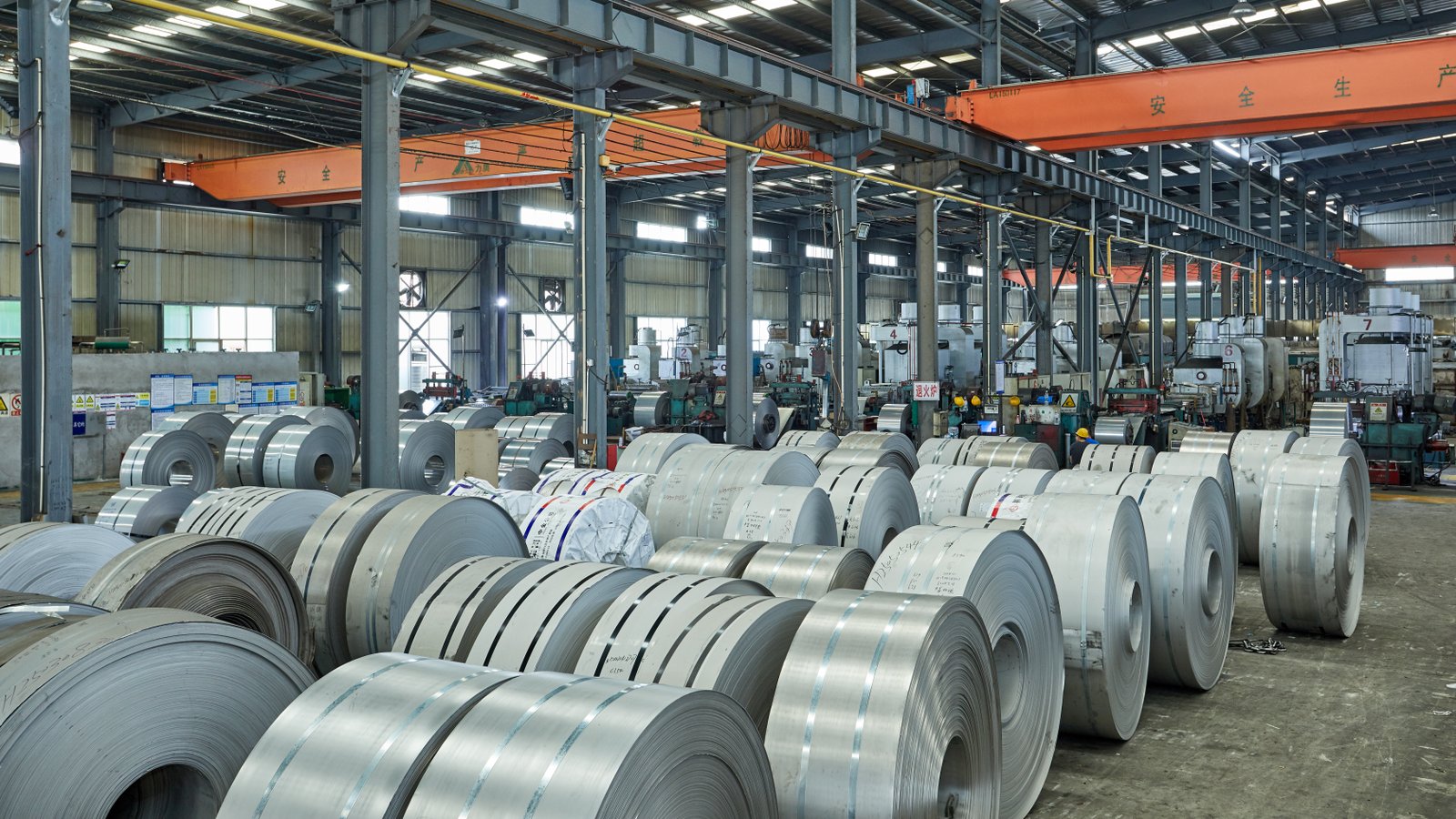
Достижение идеального баланса между первоначальными инвестициями и долгосрочными эксплуатационными расходами - конечная цель для любого производителя. Эта задача требует выхода за рамки упрощенного мышления, которое противопоставляет друг другу капитальные и эксплуатационные расходы. Вместо этого оптимальный подход рассматривает их как две стороны одной медали, где стратегические решения в одной области могут обеспечить положительную отдачу в другой. Это требует сочетания дальновидного финансового мышления, использования правильных технологий и планирования на будущее. Для наших наиболее успешных клиентов такая комплексная стратегия позволяет им создавать производственные мощности мирового класса, которые одновременно являются финансово ответственными и операционно эффективными.
Мышление TCO: Смещение фокуса с ценника на стоимость жизненного цикла
Самая важная стратегия - с первого дня работы принять концепцию совокупной стоимости владения (TCO). Это означает, что в процессе оценки каждая характеристика и каждый компонент предлагаемой линии отжига должны оцениваться не по стоимости, а по ценности в течение 10-15-летнего срока эксплуатации. Это требует партнерства с поставщиком печей, переходящего от простого обсуждения цены к совместному анализу долгосрочных характеристик.
Я помню, как работал с новым клиентом на Ближнем Востоке, который производил медные трубы для Промышленность ОВКВ5. Они были сосредоточены на достижении минимально возможного CAPEX, чтобы запустить свой проект. Мы провели несколько встреч, моделируя их предполагаемые эксплуатационные расходы. Мы провели моделирование, показывающее, как предлагаемая нами система рекуперации отработанного тепла, хотя и добавит 8% к первоначальным капитальным затратам, снизит потребление природного газа на 18%. Учитывая местные цены на газ, мы рассчитали срок окупаемости всего в 16 месяцев.
Представив подробный прогноз совокупной стоимости владения, мы переключили их внимание с первоначальной цены в $1,2 млн на экономию энергии в $1,5 млн, которую они получат в течение первого десятилетия. Они приняли стратегическое решение инвестировать в более эффективную модель. Два года спустя их главный операционный директор сказал мне, что это решение стало ключом к тому, что они обошли своих местных конкурентов по цене, сохранив при этом более высокую маржу прибыли, и все это благодаря более низкой, чем в среднем, базе эксплуатационных расходов.
Технологические рычаги оптимизации: Разумные инвестиции, которые окупаются
После того как вы приняли концепцию TCO, следующим шагом будет определение конкретных технологий, которые обеспечивают наилучшую отдачу. В компании AKS процесс проектирования сосредоточен на интеграции функций, которые непосредственно направлены на самые крупные факторы ОПЭ. Это не "дополнительные опции", это стратегические инвестиции в будущую рентабельность.
Наиболее значимым из них является наш Система рекуперации отработанного тепла. Как уже говорилось ранее, использование горячих выхлопных газов для подогрева воздуха для горения обеспечивает прямое и существенное снижение OPEX на топливо. Второе - это наш Точный контроль горения. Благодаря использованию современных датчиков и ПЛК для поддержания оптимального соотношения газа и воздуха наши печи обеспечивают полное сгорание 100%, извлекая максимум энергии из каждой молекулы топлива и предотвращая образование отходов. В-третьих, мы уделяем особое внимание Герметизация печи и контроль атмосферыВ нем используется сочетание высокоинтеллектуальной конструкции и интеллектуального регулирования давления, что позволяет свести к минимуму потребление дорогостоящих защитных газов.
ли, наш Передовые системы охлаждения играют двойную роль. Обеспечивая более быстрое и контролируемое охлаждение, они повышают общую производительность линии, позволяя производить больше тонн меди на том же оборудовании. Кроме того, точное охлаждение обеспечивает превосходную плоскостность полосы и ее металлургические свойства, резко снижая количество брака. Каждая тонна бракованной продукции - это полная потеря всей энергии, газа и труда, которые были затрачены на ее переработку, поэтому повышение качества является мощной, пусть и косвенной, стратегией сокращения операционных расходов.
Модульное проектирование и защита от будущего: Стратегия управления капитальными затратами
Для предприятий, которым необходима эффективность мирового класса, но при этом они ограничены первоначальным капитальным бюджетом, идеальным решением может стать модульный подход к проектированию. Эта стратегия предполагает проектирование линии отжига с самого начала с возможностью легкой модернизации в будущем. Это позволит вам управлять первоначальными капитальными затратами, не ограничивая себя низкопроизводительным оборудованием с высоким уровнем расходов на эксплуатацию в течение следующих двух десятилетий.
Например, компания может начать с инвестиций в основную высокоэффективную печную камеру - сердце системы. Они могут выбрать ручную загрузку и выгрузку и более простую систему управления, чтобы сократить первоначальные капитальные затраты. Однако базовый проект и компоновка, разработанные AKS, будут включать в себя пространство, точки подключения и программное обеспечение для будущих модернизаций.
Через год или два, когда бизнес начнет приносить доход и улучшится движение денежных средств, можно будет провести поэтапную модернизацию. Вторым этапом может быть добавление полностью автоматизированной системы обработки рулонов для снижения трудозатрат. Третьим этапом может стать модернизация до полной системы управления SCADA для улучшения регистрации данных и оптимизации процессов. Такой подход позволяет компании со временем перейти к созданию высококлассной, полностью автоматизированной линии, распределяя капитальные затраты на несколько бюджетных циклов и получая при этом основные выгоды от эффективной печи с первого дня. Это прагматичный и разумный способ защитить свои инвестиции на будущее.
Стратегия TCO оптимизирует как CAPEX, так и OPEXПравда
Подход, основанный на совокупной стоимости владения, позволяет сбалансировать первоначальные инвестиции и долгосрочную экономию на эксплуатации, ориентируясь на стоимость жизненного цикла, а не только на первоначальные затраты.
Модульная конструкция увеличивает общий объем капитальных затратЛожь
Модульная конструкция фактически помогает управлять капитальными затратами, позволяя осуществлять поэтапные инвестиции, сохраняя возможность будущих модернизаций без значительных затрат на перепроектирование.
Заключение
В конечном итоге выбор линии отжига меди в 2025 году зависит от одной концепции: Общая стоимость владения. Сосредоточение внимания исключительно на низких первоначальных капитальных затратах - это недальновидная стратегия, которая часто приводит к разрушительным долгосрочным эксплуатационным расходам. Разумные, перспективные инвестиции ставят во главу угла энергоэффективные технологии, чтобы обеспечить рентабельность.
-
Узнайте о ключевых рынках, которые влияют на тенденции производства печей во всем мире. ↩
-
Понимание компонентов TCO, имеющих решающее значение для составления бюджета и инвестиционных стратегий в промышленное оборудование. ↩
-
Узнайте о преимуществах и недостатках различных методов нагрева при отжиге ↩
-
Узнайте, почему энергоэффективность имеет решающее значение для управления эксплуатационными расходами ↩
-
Понять роль медных труб в решениях HVAC и их влияние на промышленность ↩


